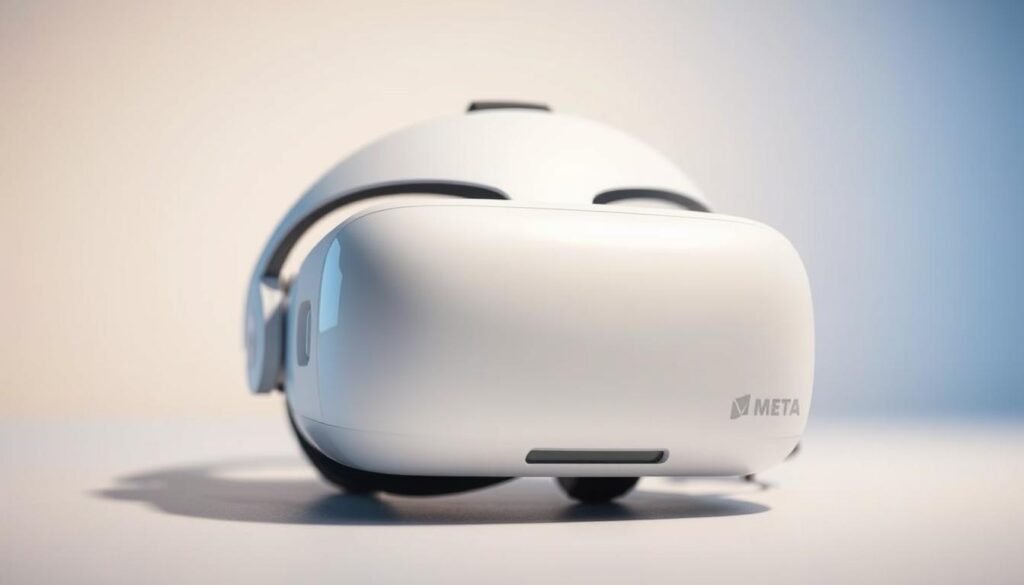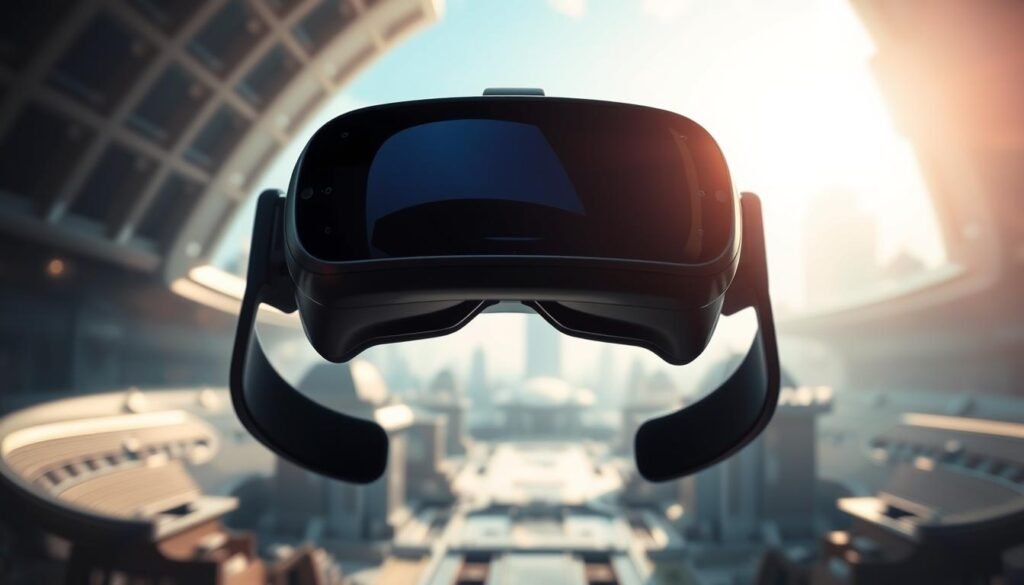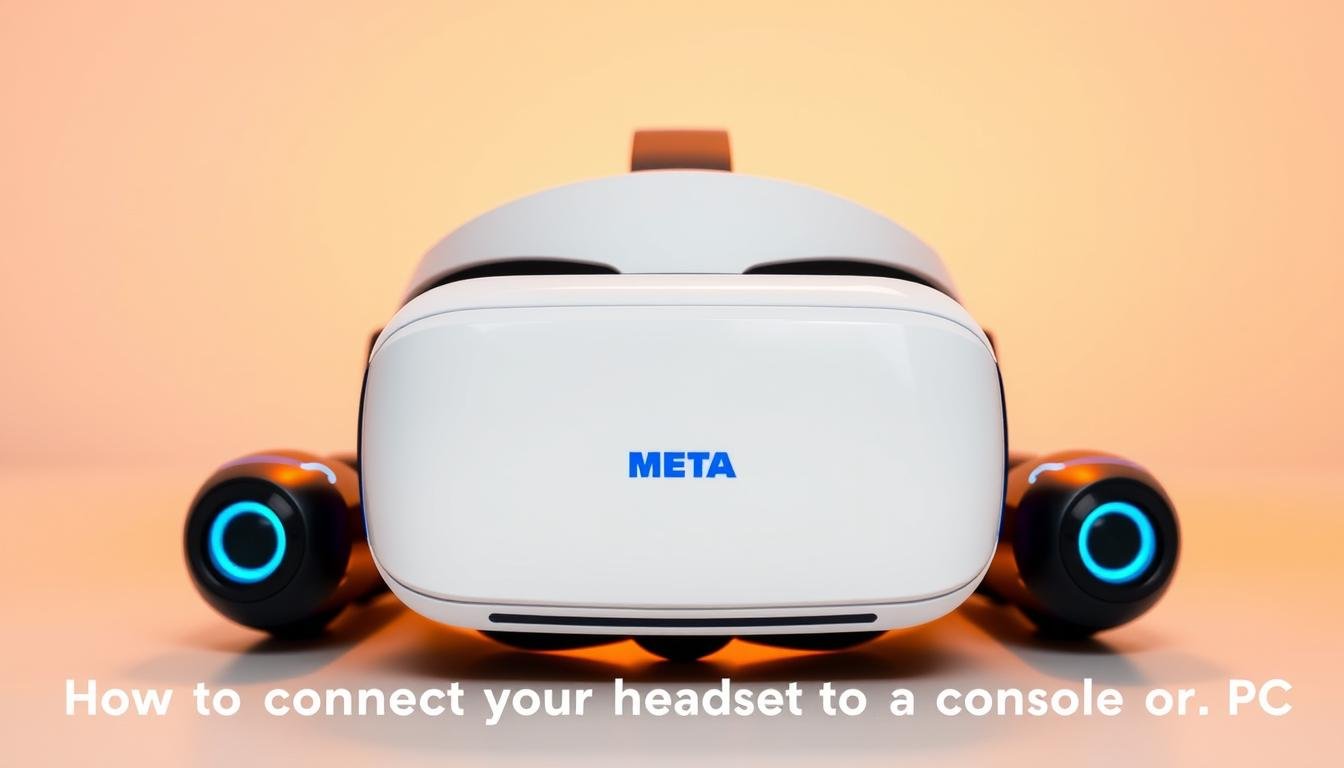Did you know that global shipments of VR devices are projected to reach 9.6 million units in 2024? This surge highlights the growing popularity of immersive experiences in gaming and interactive media. Whether you’re a seasoned gamer or a curious newcomer, linking your device to a gaming system or computer can elevate your experience to new heights.
This guide aims to simplify the process for you. From standalone options like the Meta Quest to PCVR and PSVR2, there’s a wide range of devices to choose from. Each requires specific tools, such as the right cable or compatible app, to ensure seamless integration.
Before diving in, it’s essential to assess your needs and available equipment. Understanding the basics, like what a “guardian” is or the importance of hardware compatibility, can save you time and frustration. Let’s explore how to make the most of your VR journey.
Key Takeaways
- Global VR device shipments are expected to hit 9.6 million units in 2024.
- Standalone devices like the Meta Quest offer flexibility and ease of use.
- PCVR and PSVR2 require specific cables and apps for optimal performance.
- Assess your equipment and needs before starting the setup process.
- Understanding terms like “guardian” ensures a smoother experience.
Getting Ready: Essential Equipment and Compatibility Checks
A seamless VR experience starts with the right hardware and compatibility checks. Whether you’re using a Meta Quest or another device, ensuring your system meets the necessary requirements is the first step. This section will guide you through verifying your hardware and selecting the appropriate cables and apps.
Verifying Your Hardware and PC Specifications
Before setting up your headset, it’s vital to check your PC’s specifications. VR content demands higher resources compared to traditional gaming. For instance, platforms like SteamVR and PCVR have specific requirements for optimal performance.
Here’s a quick checklist to verify your system:
- Graphics Card: Ensure it supports VR rendering.
- Processor: A multi-core CPU is recommended.
- RAM: At least 8GB, though 16GB is ideal.
- Ports: Confirm you have the correct USB-C or HDMI ports.
For detailed guidance, refer to the PC hardware requirements for VR.
Selecting the Appropriate Cables and Apps
Not all cables are created equal. For a Meta Quest or similar device, ensure your USB-C cable is data-capable, not just for charging. This ensures a stable connection and smoother experience.
Apps are equally important. For example:
- Oculus Desktop App: Essential for Meta Quest setups.
- PlayStation®VR2 App: Required for console connections.
Always update your drivers and software to avoid compatibility issues. This step is crucial for accessing the latest features and improvements.
| Device | Minimum RAM | Graphics Card | USB Port |
|---|---|---|---|
| Meta Quest Pro | 8GB | NVIDIA GTX 970 | USB-C |
| PlayStation VR2 | 16GB | AMD Radeon RX 580 | USB-C |
| Valve Index | 16GB | NVIDIA GTX 1070 | USB 3.0 |
Connect Your VR Headset to a Console or PC: Step-by-Step Guide

Whether you’re pairing your device with a gaming console or linking it to a computer, the process is straightforward. Follow these steps to ensure a smooth setup and enjoy an immersive experience.
Pairing with a Gaming Console
For devices like the PSVR2, the setup is simple. Start by connecting the included cable to your console. Ensure the cable is securely plugged into the correct port.
Next, power on your console and follow the on-screen prompts. These will guide you through the pairing process. Make sure your headset is charged and within range of the console.
Once paired, adjust the settings to suit your preferences. This includes configuring the play area and ensuring the headset fits comfortably. For more detailed instructions, refer to the console’s user manual.
Linking to a Computer
To enhance your experience, link your device to a computer. Start by downloading the necessary app, such as the Oculus desktop app or SteamVR. Ensure your computer meets the minimum requirements for optimal performance.
Connect your headset using a compatible USB-C cable. Enable Oculus Link mode on your device to establish the connection. Follow the on-screen instructions to complete the setup.
Once connected, configure the settings from both the headset and your computer. This ensures the best graphics and performance. For troubleshooting tips, check out this step-by-step guide.
By following these steps, you’ll be ready to explore virtual worlds with ease. Whether for gaming or productivity, your device offers endless possibilities.
Advanced Setups, Mixed Reality Enhancements and Troubleshooting

Taking your immersive experience to the next level requires fine-tuning your setup and addressing potential challenges. Whether you’re customising controllers or resolving performance issues, these steps ensure a seamless journey into virtual worlds.
Configuring Controllers and Adjusting Visual Settings
Advanced setups often involve customising controller settings. For devices like the Meta Quest, inside-out tracking allows precise movement detection. Pairing controllers via Bluetooth enhances responsiveness, especially in fast-paced games.
Adjusting visual settings can significantly improve your experience. Modify screen brightness to suit your room’s lighting or tweak lens settings for sharper focus. These small changes can make a big difference in comfort and clarity.
For PlayStation VR2 users, eye-tracking technology adds another layer of immersion. Ensure your play area is well-lit to maximise tracking accuracy. Recalibrate the guardian system if you move to a new space.
Troubleshooting Common Connection and Performance Issues
Encountering issues? Start by checking your cables. A loose connection can disrupt the experience. Make sure your USB-C or HDMI cables are firmly plugged in.
Software updates are crucial. Regularly update the PlayStation®VR2 App or Oculus software to access the latest features and bug fixes. This step ensures compatibility and smooth performance.
If performance drops, optimise your computer’s hardware. Close unnecessary applications to free up resources. For more detailed guidance, refer to the Windows Mixed Reality setup guide.
Still facing issues? Reach out to the manufacturer’s support team. They can provide tailored solutions to resolve persistent problems.
Conclusion
Setting up your device for immersive experiences doesn’t have to be complicated. By following the steps outlined, you can ensure a smooth link between your system and the headset. Start by verifying hardware compatibility and selecting the right cables and apps, such as the Oculus Desktop App or PlayStation®VR2 App.
An optimised setup enhances graphics and game performance, allowing you to explore mixed reality content effortlessly. Whether you’re using a Meta Quest or a PlayStation device, careful configuration ensures a seamless experience. Don’t forget to share your journey on social platforms and seek support if needed.
As technology evolves, new headsets like the Meta Quest Pro and PSVR2 continue to push boundaries. Revisit this guide for updates on the latest advancements. With the right setup, you can unlock a truly immersive experience, whether at home or work.
For more detailed instructions, check out this step-by-step guide to enhance your setup further.
FAQ
What equipment do I need to link my Meta Quest headset to a PC?
Can I use my Meta Quest headset with a PlayStation console?
How do I ensure my PC is ready for VR gaming?
What cables are best for connecting my headset to a PC?
How do I adjust visual settings for the best experience?
What should I do if my headset isn’t connecting to my PC?
Can I use mixed reality features with my Meta Quest headset?
Where can I find VR games and content?
Source Links
- How to Connect Your PlayStation VR2 Headset to a PC: Step-by-Step Guide – IGN
- VR Reviews and Lab Tests
- Manual: VR and MR development in Unity
- Best Gaming Headsets 2025
- How to Choose the Best Fight Stick, No Matter Your Budget
- How to Connect the Asus ROG Ally to a TV or Gaming Monitor
- Parent’s guide to VR headsets and VR games for kids
- Meta Quest v74 Update Adds New Casting Features and Improvements
- Apple eyes AI push on the Vision Pro. What it needs is a health pivot
- PlayStation VR2 Hand Tracking Review: How Does It Compare To Quest 3’s?
- TechPowerUp
